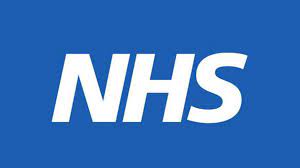Initiation and length of use
- 11 Dec 2023
- 2 Minutes to read
- Print
- PDF
Initiation and length of use
- Updated on 11 Dec 2023
- 2 Minutes to read
- Print
- PDF
Article summary
Did you find this summary helpful?
Thank you for your feedback
- Women with genitourinary symptoms of menopause should be offered a vaginal oestrogen and this can be continued for as long as required.
- NICE says offer a choice of vaginal oestrogen preparations to people with troublesome genitourinary menopause symptoms, including those on systemic HRT and continue symptoms for as long as needed to relieve symptoms.
- NICE also says for people with troublesome genitourinary symptoms and overactive bladder, see medicines for overactive bladder in NICE guideline on managing urinary incontinence and pelvic organ prolapse.
- If only genitourinary symptoms are present, vaginal oestrogen is preferred over using systemic HRT.
- A progestogen is not required because at licensed doses, vaginal oestrogen is not associated with significant systemic absorption.
- Vaginal dryness tends to increase in severity with time, and symptoms may appear for the first time many years after the last menstrual period.
- It is better to start treatment early rather than wait for symptoms to worsen.
- Vaginal oestrogen can be used in combination with vaginal moisturisers or vaginal lubricants and with systemic HRT.
- All vaginal preparations are comparable in terms of their efficacy, and the choice of preparation should be determined by patient preference.
- Women may need at least 3 months of treatment to achieve symptom reduction.
- Continued therapy is generally required because symptoms are likely to recur if treatment is stopped.
Note:
- NICE says if vaginal oestrogen does not improve genitourinary symptoms, consider increasing the dosage, within the standard therapeutic range, after seeking advice from a health care professional with expertise in menopause.
- Where there is no improvement in symptoms, this should prompt consideration for an alternative diagnosis.
References and Further Information:
- NICE CKS Guidance. Menopause. Management. Management of menopause, perimenopause or premature ovarian insufficiency. Last revised September 2022.
- NICE CKS Guidance. Menopause. Diagnosis. Diagnosis of menopause and perimenopause. Urogenital symptoms. Last revised September 2022.
- National Institute for Health and Care Excellence. Guideline. Menopause (update). Draft for consultation, Nov 2023.
- Lethaby A, Ayeleke R, Roberts H. Local oestrogen for vaginal atrophy in postmenopausal women. Cochrane Database Syst Rev. CD001500, 2016.
- NAMS position statement. The 2020 genitourinary syndrome of menopause statement of The North American Menopause Society. The Journal of the North American Menopause Society. Vol 27 (9). 2020. Page 981.
- Crandall CJ, Hovey KM, Andrews CA et al , “Breast cancer, endometrial cancer, and cardiovascular events in participants who used vaginal estrogen in the Women's Health Initiative Observational Study,” Menopause , vol. 25, no. 1, pp. 11-20, 2018.
- Hirschberg A, Bitzer J, Cano A et al. Topical estrogens and non-hormonal preparations for post-menopausal vulvovaginal atrophy: an EMAS clinical guideline. Maturitas. 2021.
Was this article helpful?

